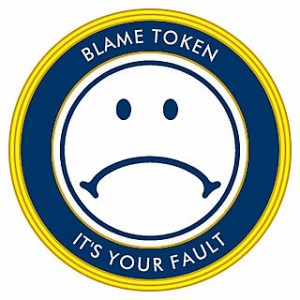 With smells of honeysuckle and juniper lofting over the pungent spring mud, a woman is walking her dog down a quiet country road as the day starts to wane. Happy to be taking in the spacious feel of the outdoors, together they stroll past trees and fields, connected by 6 feet of leash and a shared appreciation for the scents, sights, and sounds of the lush green world at the edge of their neighborhood.
With smells of honeysuckle and juniper lofting over the pungent spring mud, a woman is walking her dog down a quiet country road as the day starts to wane. Happy to be taking in the spacious feel of the outdoors, together they stroll past trees and fields, connected by 6 feet of leash and a shared appreciation for the scents, sights, and sounds of the lush green world at the edge of their neighborhood.
They come along a shaded house by the side of the lane, and both of them glance over to see two dogs bolting out a screen door, racing towards them with growls, barks, and teeth exposed. With shock and terror, the woman doesn’t know whether to run or stand firm. Her dog is too big to lift and too old to fight. There is a noisy stand-off, canine threats from both sides, and in no time, a short dog fight.
Just as the woman can pull her dog away, a man comes out of the house and stands on the porch with his arms folded in a defensive manner. Look here https://chwilowkionline247.pl/sms-kredyt to find more information right now. The two unleashed dogs run back to the house and stand by their master. The man continues to stand with his arms crossed, defiantly.
The woman’s emotions are raw. Catching her breath, she notices her impulse to scream at this man, to beat him down with her indignance. She wants to hold him accountable, to make it clear that she is the good person who had her dog on a leash and that he is simply a bad person. The urge to blame this person and make him wrong is overwhelming.
She decided to not indulge the urge. Instead, she stood there holding onto her dog’s leash, as the two people stared at each other. She did shout out, but what came from her was “I’m so glad you came out”, and she said it with real appreciation. His response was a simple “You’re welcome. If I’d known it was happening I would have come out sooner.”
In each of us is an immense capacity to blame. It takes a high level of emotional intelligence to see the impulse to indulge situations where that capacity wants to be indulged. Some situations make it easy to find who was at fault and to use that person – and that story – as the focal point of our need to both make convenient sense of the situation and give the emotions a place to treat as their target.
A step in emotional growth is to notice the seductive pull to channel emotions into the blame game. Even when there IS someone at fault and the story lends itself to blame, you can observe the part of you that wants to indulge the opportunity to blame; you can question if this part of you wants something akin to healing or something akin to revenge. Accountability leads to healing whereas blame does not.
Much healing comes from taking responsibility for the meaning we place on the experiences we have. While someone else really might be to “blame” for what happened, it is we, ourselves, who create the world that we experience, triggered by events out there. We create the perceptions, emotional floodings or shut downs, and contractive or explosive responses.
Whenever blame gets triggered in you, it is an opportunity to examine what you use to come up with the meaning you applied to the situation and to explore who this part of you is who wants to indulge the passive aggressive endeavor of blame.
Copyright © 2014 Jim Lehrman
 One way I like to give people an ecstatic experience is with a couple of simple seemingly innocuous questions. They are the sort of questions you’d ask a very young child, yet they serve to deepen our perspective of reality.
One way I like to give people an ecstatic experience is with a couple of simple seemingly innocuous questions. They are the sort of questions you’d ask a very young child, yet they serve to deepen our perspective of reality.
I start by standing outdoors with the person and asking, “where does the sky begin?” There are a few answers I typically get, but the answer I’m looking for is “at my feet”.
Then I ask “where does the environment start?” The most common answer, given as a follow up to the first one, is “at my skin”, to which I supportively say that that’s correct, but only if your point of reference is at the edge of your skin; only if your experience of being in the world starts at the edge of your body. And, while we live in the world, on a deeper and more accurate level, we live in our experience. You can click here to find more detailed information.
Sure, you can notice the leaves swaying in the breeze, can feel that same breeze against your skin, and notice the song being sung by the nearby bird, and you can take all that in with awareness and even appreciation of the beauty of the environment. But you can also notice the flow of your breath, the sinking or rising feeling that comes over you emotionally, and the thoughts of wonder or of conviction which seem to blow in and out of your mind like the breeze. These are events that are happening, just like the wind and the birds “out there”.
There are two levels of “insufficient awareness” which can keep you from being fully present to your environment. The first is to not even be aware of the elements going on in your experience. I call this being “lost to the experience”. Walking next to a building that is on fire and not noticing it, or having a surge of anger and not noticing it are examples of being lost TO the experience. In both cases, the person is out of touch with what is going on in his or her environment, regardless of which side of the skin it’s happening on.
The second is to be aware but to over-identify with them. I call this being “lost in the experience”. Taking home a puppy being given away when you don’t have room, or indulging a surge of anger like a surfer on a wave are examples of being lost IN the experience.
But imagine you are able to notice – as it arises – the impulse to take home that puppy, or the surge of anger demanding to be indulged. If you can notice those inner elements of your experience, then your point of reference for what is happening around you is no longer at the edge of your skin but at the edge of your attention.
Imagine noticing your thoughts, shifts of emotion, sensations – all being experienced as simply more of the stuff “out there”. The flow of your experience is… noticing the airplane in the sky, noticing the tightness in your belly, noticing the thought arising “I wonder what I’ll have for lunch”, noticing the smell of the nearby creosote bush, noticing the memory return of a rainstorm a year ago… These are all events, some of which are located out there, some located not out there.
If your point of reference, if where you locate YOURSELF, is at the point from which your attention moves from object to object, then the environment starts at the edge of your attention, not at the edge of your body.
It may be paradoxical but it’s true, that we tend to respond more objectively, effectively, and compassionately to the things we think need attention in the environment around us than to the things that happen inside us. Thus, this shift of perspective may help you treat yourself as well as you treat the world around you.
To the extent that you can allow yourself to engage with the events that unfold in your inner experience as consciously, autonomously, and either responsively or equanimously as you engage with the events that occur “out there”, you are that much more in the natural flow of life and that much more fully taking in the experience of it.
Try this: Take a handful of minutes to sit and allow yourself to notice whatever happens to come into your attention. Regardless of whether your attention is on something from inside you or from something “out there”, acknowledge each thing you notice as simply being more “stuff”. Take it slow, and do this with an awareness of the distinction between the observer and what is observed, between you and not you. Whatever is in your attention is in the environment – you are the observer and whatever is in your attention is not you. This observing “you” is the only thing NOT in the environment. If you keep up this practice over time, your skills of attention will sharpen, and more and more of this observing “you” will become part of the environment. The more “you” disappear, the more spacious your experience becomes.
Copyright © 2014 Jim Lehrman
 Do you notice the ebb and flow of your emotions? The gravitation towards some feelings and the aversion to others? Hopefully, you know where you stand on the gamut of emotions – what your most and least favored feelings are. Faith is a force that we don’t often think of as being an emotion, but it is a “felt experience” as much as is fear.
Do you notice the ebb and flow of your emotions? The gravitation towards some feelings and the aversion to others? Hopefully, you know where you stand on the gamut of emotions – what your most and least favored feelings are. Faith is a force that we don’t often think of as being an emotion, but it is a “felt experience” as much as is fear.
Faith and fear are two poles on a continuum. At any time you are at some point on that continuum between 100% faith and 100% fear.
When you notice an experience of fear it is good to notice where you are on the continuum. It is good to remember that your location changes a lot on this continuum, and that many factors influence the shifting location. A beneficial experiment is to pay close enough attention to your state – whether it be faith, fear, sadness, depression, anger, or anything – that you can notice your actual movement to the right or left on that state’s continuum.
It is also good to remember that neither faith nor fear exist “out there”. They don’t “appear in nature”. Faith and fear are what we create within us in response to some thing or situation out there.
Copyright © 2014 Jim Lehrman
 With smells of honeysuckle and juniper lofting over the pungent spring mud, a woman is walking her dog down a quiet country road as the day starts to wane. Happy to be taking in the spacious feel of the outdoors, together they stroll past trees and fields, connected by 6 feet of leash and a shared appreciation for the scents, sights, and sounds of the lush green world at the edge of their neighborhood.
With smells of honeysuckle and juniper lofting over the pungent spring mud, a woman is walking her dog down a quiet country road as the day starts to wane. Happy to be taking in the spacious feel of the outdoors, together they stroll past trees and fields, connected by 6 feet of leash and a shared appreciation for the scents, sights, and sounds of the lush green world at the edge of their neighborhood.
